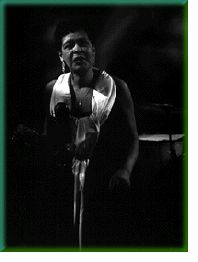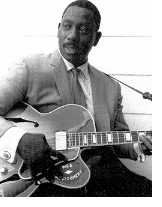Growing Pains
Reflecting on the Social Climate during the early days of Jazz
by Ben Kettlewell
![]()
Growing Pains
Reflecting on the Social Climate during the early days of Jazz
by Ben Kettlewell
![]()
 During
the American Federation of Musicians 1901 Convention in Denver,
Colorado, members unananimously condemned ragtime in a harsh
statement delivered by its president. Union musicians were cautioned
against playing ragtime, and the Federation's president as quoted in
the Aug. 7 Denver Star, maintained that '. . . the musicians know
what is good, and if the people don't, we will have to teach them."
Clearly, Union musicians were a different breed in those days, and
the smugness of the A. F. of M. suggests the intensity with which a
radical shift in public taste would be debated. Neil Leonard, whose
1962 book Jazz and the White Americans, documents the opinion
above, and the ones that follow, along with much additional insight.
If you can locate a copy, I think you would find it enlightening
reading although it has been out of print for over 38 years.
During
the American Federation of Musicians 1901 Convention in Denver,
Colorado, members unananimously condemned ragtime in a harsh
statement delivered by its president. Union musicians were cautioned
against playing ragtime, and the Federation's president as quoted in
the Aug. 7 Denver Star, maintained that '. . . the musicians know
what is good, and if the people don't, we will have to teach them."
Clearly, Union musicians were a different breed in those days, and
the smugness of the A. F. of M. suggests the intensity with which a
radical shift in public taste would be debated. Neil Leonard, whose
1962 book Jazz and the White Americans, documents the opinion
above, and the ones that follow, along with much additional insight.
If you can locate a copy, I think you would find it enlightening
reading although it has been out of print for over 38 years.
A music journalist from that period, Daniel G. Mason, in the March 1918 issue of the New Music And Church Review, admitted that the "jerk and rattle" of ragtime might indeed be the music of the common people, but he had little faith in the people's taste. Ragtime had vitality, he admitted, but it was the vitality of the comic strip, and not a significant example of American culture. Mason's position, interestingly enough, was later attacked by other writers who argued that the comic strip, in particular "Krazy Kat," was indeed a valuable contribution. Ragtime departed the scene, and jazz arrived. In a 1922 drama entitled The National Anthem, which was concerned with the debauchery of modern youth, playwright J. Hartley Manners argued that the new music was a threat to civilization itself, and that jazz was "modern man's Saturnalia." We should recall the social context in which such remarkable anxiety flourished. It was the time of Prohibition, when, as Neil Leonard points out, traditionalists "regarded jazz, along with intemperance and unconventional sexual behavior, as a sign or cause of the advancing degeneration" of society.
" Does Jazz Put The Sin In Syncopation ?" asked Anne Shaw Faulkner in a 1921 issue of The Ladies'Home Journal. She quoted the opinion of Dr. Henry Van Dyke, a Presbyterian clergyman and professor at Princeton, that jazz "is not music at all." Sigmund Spaeth took the same position in his piece for Forum in 1928, which was flatly entitled "Jazz Is Not Music." Mr. Spaeth, who would later become well-known as radio's Tune Detective, heard the music of the golden age of early Louis Armstrong, Duke Ellington, Bix Beiderbecke, and the rest as "merely a raucous and inarticulate shouting of hoarse-throated instruments, with each player trying to outdo his fellows, in fantastic cacophony."
The Ladies' Home Journal, apparently obsessed with the matter, printed another article in 1921,"Back To Pre-War Morals." John R. McMahon claimed that ". . . if Beethoven should return to earth and witness the doings of a jazz orchestra, he would thank heaven for his deafness.... .All this music has a droning, jerky incoherence interrupted with a spasmodic blah! blah! blah!' that reminded me of the way that live sheep are turned into mutton."And The New York Times, on November 14, 1924, quoted concert pianist Ashley Pettis: "Jazz is nothing more or less than the distortion of every esthetic principle."
Some people were bothered by the bodily movements with which listeners responded to the new music. From The New York Times once more, on October 7,1928: "With music of the old style, even the most moving,the listener was seldom upset from his dignified posture. . . the bodily anchor remained intact. The listener behaved as impassively as the radio's microphone. Nothing in his manner indicated either a struggle for self-control or an absence of decorum." For the other side of the picture, we can examine the Times for April 14,1926, in which was printed a charge by New Jersey Supreme Court Justice J.F. Minturn that ". . . in response to jazz's call there ensues a series of snake-like gyrations and weird contortions of seemingly agonized bodies and limbs, resembling an Asiatic potpourri which . . . is called a dance." And still earlier, in 1921, Fenton T. Bott, head of the National Association of Masters of Dancing, warned that "those moaning saxophones and the rest of the instruments with their broken, jerky rhythm make a purely sensual appeal.They call out the low and rowdy instincts. All of us dancing teachers know this to be a fact.... Jazz is the very foundation and essence of salacious dancing."
 The
manner of the musicians themselves often troubled Mr. H.O.Osgood, the
editor of the Musical Courier and author of the 1926 book
So This Is Jazz. Mr. Osgood described the players of the Ted
Lewis band as "jolting up and down and writhing about in simulated
ecstasy, in the manner of Negroes at a Southern camp-meeting
afflicted with religious frenzy." Ted Lewis made some good hot
records that featured Fats Waller and Benny Goodman, but his
vaudeville performing group was probably putting on the audience when
the author witnessed the simulated ecstasy. What is significant in
the writer's concern is the racial element. Black performers and
their music were seen as threatening in many quotations of the
period. In a 1922 interview, the actress Laurette Taylor, who played
a lead in the already mentioned National Anthem, stated that
". . . jazz, the impulse for wildness that has undoubtedly come over
many things besides the music of this country, is traceable to the
Negro influence." Ms. Faulkner,whom we met earlier in The Ladies'
Home Journal stated that ". . . jazz originally was the
accompaniment of the voodoo dancer, stimulating the half-crazed
barbarian to the vilest deeds." Writer H.E. Krehbiel, in The
Literary Digest of 1920, associated jazz with "the Negro brothels
of the South" and feared that ever more music and dance would emanate
from these mysterious haunts. The legend of jazz has by now perfectly
assimilated the viewpoint that the bordello was in fact one of a
number of probable sources; but what is seen today as quaint and even
romanticized history was then perceived by the Reverand Dr. John R.
Straton, a Baptist clergyman in New York, as a tendency "endangering
our civilization in its general revolt against authority and
established order." (New York Times, May 26,1927.) Improvisation
itself was condemned. An editor of The Musical Courier named
Fran Patterson, in "Jazz The National Anthem?" (1922),
reported that his colleagues agreed "that the'ad libbing'or 'jazzing'
of a piece is thoroughly objectionable, and several of them advanced
the opinion that this Bolshevistic smashing of the rules and tenets
of decorous music, this excessive freedom of interpretation, tended
to a similar letting down on the part of the dancers, a similar
disregard for the self-contained and self-restrained attitude that
has been described by the makers of the rules of dignified social
behavior.
The
manner of the musicians themselves often troubled Mr. H.O.Osgood, the
editor of the Musical Courier and author of the 1926 book
So This Is Jazz. Mr. Osgood described the players of the Ted
Lewis band as "jolting up and down and writhing about in simulated
ecstasy, in the manner of Negroes at a Southern camp-meeting
afflicted with religious frenzy." Ted Lewis made some good hot
records that featured Fats Waller and Benny Goodman, but his
vaudeville performing group was probably putting on the audience when
the author witnessed the simulated ecstasy. What is significant in
the writer's concern is the racial element. Black performers and
their music were seen as threatening in many quotations of the
period. In a 1922 interview, the actress Laurette Taylor, who played
a lead in the already mentioned National Anthem, stated that
". . . jazz, the impulse for wildness that has undoubtedly come over
many things besides the music of this country, is traceable to the
Negro influence." Ms. Faulkner,whom we met earlier in The Ladies'
Home Journal stated that ". . . jazz originally was the
accompaniment of the voodoo dancer, stimulating the half-crazed
barbarian to the vilest deeds." Writer H.E. Krehbiel, in The
Literary Digest of 1920, associated jazz with "the Negro brothels
of the South" and feared that ever more music and dance would emanate
from these mysterious haunts. The legend of jazz has by now perfectly
assimilated the viewpoint that the bordello was in fact one of a
number of probable sources; but what is seen today as quaint and even
romanticized history was then perceived by the Reverand Dr. John R.
Straton, a Baptist clergyman in New York, as a tendency "endangering
our civilization in its general revolt against authority and
established order." (New York Times, May 26,1927.) Improvisation
itself was condemned. An editor of The Musical Courier named
Fran Patterson, in "Jazz The National Anthem?" (1922),
reported that his colleagues agreed "that the'ad libbing'or 'jazzing'
of a piece is thoroughly objectionable, and several of them advanced
the opinion that this Bolshevistic smashing of the rules and tenets
of decorous music, this excessive freedom of interpretation, tended
to a similar letting down on the part of the dancers, a similar
disregard for the self-contained and self-restrained attitude that
has been described by the makers of the rules of dignified social
behavior.
In this day of "anything goes" MTV, and in your face inescapable multi-media, its difficult to understand the fears of the authorities in the 1920s. Jazz went on to become an art music, society did not disintegrate, and civilization is still with us.So what was all the shouting and grand-standing about? Change?, ....change and the inevitable resistance to it. "Jazz," however it was defined, had an important symbolic role in the '20s, but to credit it as the driving force behind all the social changes we have been through would be to exaggerate its importance in early 20th century American society.
by Ben Kettlewell